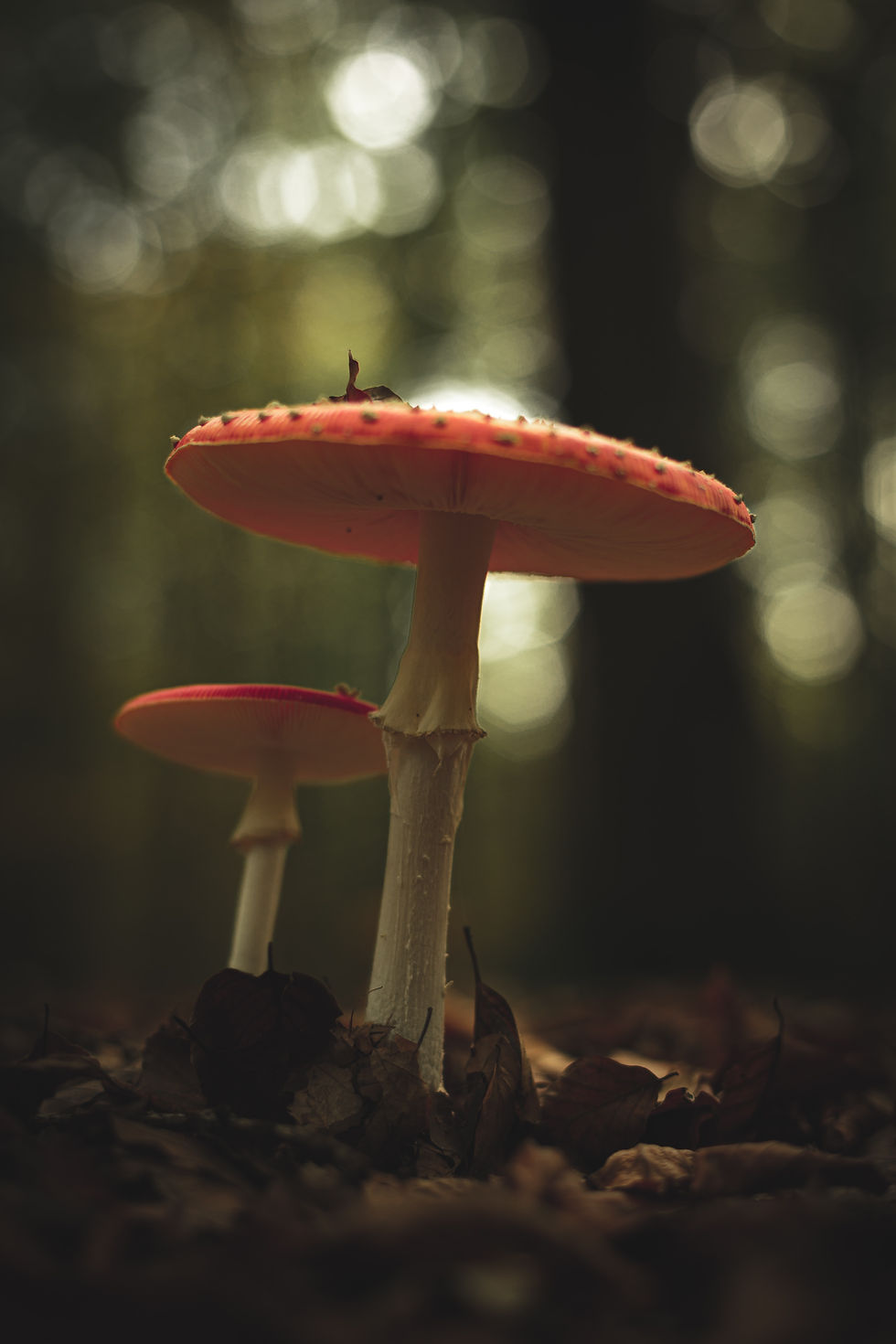What Makes Mushrooms “Magic”?
- sofiamanne
- Jun 10
- 2 min read
Is it magic? Is it chemistry? Or could it be something even more profound?

People have been turning to psychedelic mushrooms for centuries—and in modern times, more and more are reporting powerful, healing, even life-changing experiences. But why? What exactly gives these fungi their so-called “magic”?
Let’s look at the science behind the wonder.
The Power of Psilocybin
The magic in “magic mushrooms” lies in a compound called psilocybin, found in over 300 species of mushrooms across the globe—mostly within the Psilocybe genus. Once ingested, psilocybin is quickly converted by the body into psilocin, the active compound responsible for the mind-altering effects.
From Indigenous ceremonial use to cutting-edge mental health treatments, psilocybin mushrooms are used both recreationally and therapeutically around the world.
How Do They Work?
While the full picture of how psychedelics interact with consciousness is still being explored, we do know that psilocin interacts with serotonin receptors—especially those located in the prefrontal cortex of the brain. This region is associated with mood regulation, perception, cognition, and decision-making.
These serotonin receptors (specifically the 5-HT2A subtype) are densely packed in the neocortex—a region particularly developed in humans. This is likely why psilocybin has such profound cognitive and emotional effects on us.
When psilocin activates these receptors, people often experience:
Visual, sensory, and auditory hallucinations
A dissolving of the ego or self
Feelings of awe, interconnection, or spiritual insight
A blending of the senses—known as synesthesia (like “seeing sounds” or “tasting colors”)
It’s these experiences that lead many to describe their trips as nothing short of magical.
Breaking Old Patterns
One of the most fascinating aspects of psilocybin is its ability to disrupt entrenched neural pathways. Normally, our brains operate like well-worn trails in a forest—thoughts and behaviors follow the same familiar routes over and over. But under the influence of psilocybin, those patterns loosen.
Neuroscientists call this neural plasticity—the brain’s ability to form new connections. During a mushroom experience, the brain becomes more flexible, more open, and more interconnected. This temporary rewiring can help users see themselves, their lives, and the world around them from completely new perspectives.
That’s why so many people emerge from a psilocybin journey saying it changed their lives. It’s not a hallucination in the sense of being false or meaningless—it’s a shift in awareness, often revealing truths that were hidden under the surface.
Is It Magic? Or Is It Medicine?
So, what makes mushrooms magic? It's not sleight of hand or superstition—it’s a beautifully complex dance between chemistry, consciousness, and biology. In the right setting, psilocybin mushrooms can act as a catalyst for healing, growth, and transformation.
And while there's still much to learn, science is catching up with what ancient traditions have known for ages: sometimes, magic is very real.
Written By: Sofia Manne
OpenAI used for editing



Comments